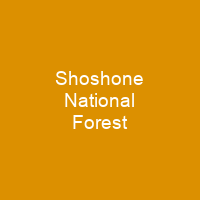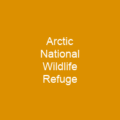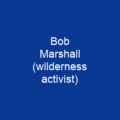Discovering Shoshone National Forest: A Journey Through Time
Imagine stepping into a time capsule where nature’s beauty and history intertwine seamlessly. Welcome to Shoshone National Forest, the first federally protected National Forest in the United States, covering nearly 2.5 million acres in Wyoming. Created by Congress and President Benjamin Harrison in 1891, it was originally part of the Yellowstone Timberland Reserve. How did this land become a sanctuary for both nature and history?
The Native American Legacy
Native Americans have lived in the region for at least 10,000 years, with the Shoshone Indians being a major tribe encountered by European explorers. The forest has retained its wildness, with portions frequented by the Shoshone and Sioux for spiritual purposes. Can you imagine the stories these lands hold? Each tree, each rock, each stream whispers tales of ancient times.
Exploring the Forest’s Beginnings
In 1891, S. President Theodore Roosevelt established the Yellowstone Timberland Reserve, creating the first national forest in the U.S. The reserve was later expanded and divided into four units, with Shoshone being the largest. In 1905, it became a National Forest, but its current title was not formulated until 1945. A remnant of early forest management is the Wapiti Ranger Station, built in 1903.
Conservation and Management
The forest is managed by the U.S. Forest Service, with an average staff of 165 employees and a $17.5 million annual budget from 2008-2012. Shoshone National Forest practices conservation of resources for sustainable use of timber, wood pulp, and minerals. The annual harvest is 4.5 million board-feet of timber and 2.5 million board-feet of dead and down trees used for firewood and poles.
Wildlife and Ecosystems
The forest is part of the Greater Yellowstone Ecosystem, with 1,700 documented species of plants and a wide variety of ecosystems due to its elevation range. Flora includes sagebrush, grass-dominated vegetation, lodgepole pine, Rocky Mountain juniper, quaking aspen, subalpine fir, Engelmann spruce, and limber pine.
Wildlife Abounds
Fauna include at least 335 species of wildlife, such as Bighorn sheep, Grizzly bears, and a large population of wolves. The forest also has a high percentage of barren land above timberline, with some areas listed as rocky or icy. Exotic plant species are considered noxious and impact native communities, while insects like the mountain pine beetle have harmed tree species.
Controlled Burns and Management
Controlled burns, firewood harvesting, and spraying are used to address the situation, and conservation groups have raised concerns over management practices and cattle overgrazing problems. The grizzly is listed as a threatened species by the U.S. Fish and Wildlife Service, with its stronghold in the Shoshone National Forest. Non-lethal traps capture ‘nuisance bears’ for relocation.
Geography and Attractions
The forest contains four areas of pristine wilderness with no human activities, including mining, logging, or road construction. The Wilderness Act of 1964 enhanced the protection status of remote land, prohibiting alterations by man and allowing only hiking, hunting, and fishing.
Mountain Ranges and Waterways
The Absaroka Mountains are basaltic in origin, with volcanic activity estimated to have occurred 50 million years ago. The forest’s major tributaries, such as the Bighorn River, originate in the Absarokas, and important passes include Sylvan Pass and Togwotee Pass. Although often considered a part of the Absaroka Mountains, the Beartooths are distinct in appearance and geologic history.
Glaciers and Lakes
The Wind River Range is composed primarily of Precambrian granitic rock and features numerous mountains exceeding 13,500 ft. The range is popular among mountain climbers due to its solid rock and variety of routes. There are over 500 lakes in the forest, as well as 1,000 mi of streams and rivers.
Activities and Attractions
Shoshone National Forest provides habitat for numerous species, including beavers, which improve habitats for other species like moose, waterfowl, and amphibians. Moose populations have declined due to a parasite. The forest is also home to large ungulate populations, such as elk (20,000) and mule deer (40,000), as well as bighorn sheep, mountain goats, bison, and pronghorn antelope.
Recreation
An estimated 300 species of birds inhabit the Shoshone National Forest, including Bald Eagles and Trumpeter swans. The forest is also home to at least six species of trout, various reptiles, and over a dozen species of lizards. Amphibians such as the Columbia spotted frog are considered species of concern due to disease, habitat loss, and human introduced toxins.
Wildlife Management
The forest contains four areas of pristine wilderness with no human activities, including mining, logging, or road construction. The Wilderness Act of 1964 enhanced the protection status of remote land, prohibiting alterations by man and allowing only hiking, hunting, and fishing.
Fire Management
Fire management officials recognize that forest fires are a natural part of the ecosystem and have since shifted to managing prescribed burns to maintain the health of the forest. The policy to extinguish fires before they had a chance to burn out dead and dying old growth led to an increase in fuels, resulting in devastating forest fires such as the Blackwater fire of 1937, which killed 15 firefighters.
Fire Incidence
Between 1970 and 2012, Shoshone National Forest averaged 25 fires annually, with half due to natural ignition from lightning. The highest fire incidence is in August and September, with an average of 2,334 acres burned annually. The worst year was 1988, when 194,430 acres were burned.
Conclusion
Shoshone National Forest is a treasure trove of natural beauty and historical significance. From its rich Native American heritage to the diverse wildlife and stunning landscapes, this forest offers endless opportunities for exploration and adventure. As you venture into its depths, remember that every step you take is part of preserving this unique ecosystem for future generations.

You want to know more about Shoshone National Forest?
This page is based on the article Shoshone National Forest published in Wikipedia (retrieved on December 13, 2024) and was automatically summarized using artificial intelligence.







